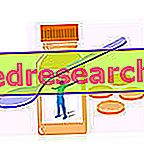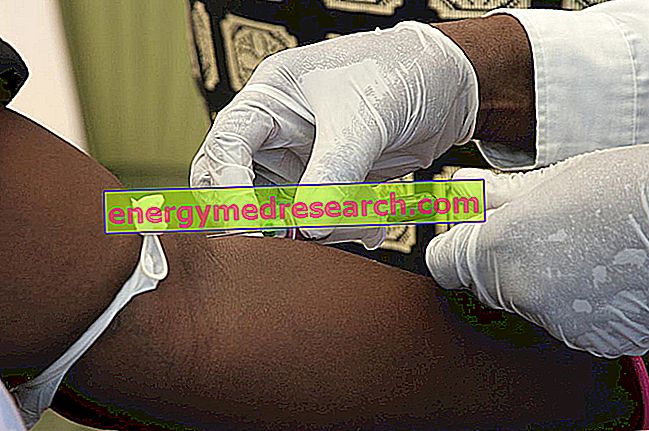
What is Ziagen?
Ziagen is a medicine that contains the active substance abacavir. It is available as yellow capsule-shaped tablets (300 mg) and as an oral solution (20 mg / ml).
What is Ziagen used for?
Ziagen is an antiviral drug. It is used in combination with other antiviral medicines to treat adults and children with the human immunodeficiency virus (HIV), the virus that causes acquired immune deficiency syndrome (AIDS).
The medicine can only be obtained with a prescription.
How is Ziagen used?
Ziagen therapy should be prescribed by doctors who are experienced in the treatment of HIV infection.
The recommended dose of Ziagen for patients over 12 years of age is 600 mg a day, given either in doses of 600 mg once a day or in doses of 300 mg twice a day. In children under the age of 12, the dosage depends on body weight. Children taking Ziagen tablets should be monitored closely for any side effects.
Ziagen can be taken with or without food. It is advisable to swallow the tablets whole. For patients who are unable to ingest the whole tablets, the oral solution is preferable, or crush the tablets and add them to a small amount of food or drink, immediately before taking the dose. For more information, see the package leaflet.
Before starting therapy with Ziagen, it is appropriate for all patients to ascertain the presence of a specific gene called "HLA-B (type 5701)". There is a greater risk of an allergic reaction to abacavir in patients in whom this gene is present, so they should only take Ziagen if there are no alternative therapies.
Patients treated with Ziagen must be given a special alert card that contains the main warnings on the safety of the drug.
How does Ziagen work?
The active substance in Ziagen, abacavir, is a nucleoside reverse transcriptase inhibitor (NRTI). It blocks the activity of reverse transcriptase, an enzyme produced by HIV that allows the virus to infect cells and reproduce. By inhibiting this enzyme, Ziagen assumed in
association with other antiviral drugs reduces the amount of HIV in the blood, keeping it at a reduced level. Ziagen does not cure HIV infection or AIDS, but it may delay the damage to the immune system and the development of infections and diseases associated with AIDS.
How has Ziagen been studied?
Ziagen has been studied in six main studies involving 1, 843 HIV-infected adults. Ziagen has been taken alone (alone) or has been added to the combination of lamivudine and zidovudine (other antiviral drugs) or to the patient's current HIV therapy. One study compared the efficacy of Ziagen taken once or twice a day, in combination with lamivudine and efavirenz (other antiviral drugs) in 784 patients. The effectiveness of Ziagen has also been examined in three studies performed on 489 HIV-infected children and adolescents aged between three months and 18 years.
The effects of Ziagen have been compared with those of other antiviral drugs, with placebo (a dummy treatment) or with no treatment. The main measures of effectiveness were the concentration of HIV in the blood (viral load) and the number of CD4 T cells in the blood (CD4 cell count). CD4 T cells are a type of white blood cell that play an important role in fighting infection but are killed by HIV.
What benefit has Ziagen shown during the studies?
In all studies, Ziagen reported a reduction in viral loads, particularly when taken in combination with other antiviral drugs. It was more effective than placebo in reducing viral loads and just as effective as other antiviral drugs. Increases in CD4 cell counts have also been observed in patients treated with Ziagen. After 16 weeks of therapy, 77% of adults treated with Ziagen associated with lamivudine and zidovudine had a viral load of less than 400 copies / ml (ie 67 of 87 subjects), compared to 38% of adult patients treated with lamivudine and zidovudine without Ziagen (ie 33 subjects out of 86). The efficacy of Ziagen has also been shown to be similar to that of indinavir, with about two thirds of patients having viral loads below 400 copies / ml after 16 weeks. The two dosage regimens of Ziagen (taken once or twice a day) showed similar results on the viral load, with about two thirds of patients with viral loads below 50 copies / ml after 48 weeks.
Studies in children have shown that Ziagen, in combination with other antiviral drugs, has reduced viral loads to the same extent as other drug combinations after 24 weeks.
What is the risk associated with Ziagen?
The most common side effects with Ziagen (seen in between 1 and 10 patients in 100) are anorexia (loss of appetite), headache, nausea, vomiting, diarrhea, skin rash, fever, lethargy (lack of energy) and fatigue . For the full list of all side effects reported with Ziagen, see the Package Leaflet.
About 5% of subjects treated with Ziagen develop a hypersensitivity reaction (allergic reaction), which generally occurs within the first six weeks of treatment. Some of these cases may have a fatal outcome. The risk of hypersensitivity is higher in patients with the HLA-B gene (type 5701). Hypersensitivity reactions are almost always characterized by symptoms such as fever or rash, but also often by nausea, vomiting, diarrhea, abdominal pain, dyspnoea (difficulty breathing), cough, fever, lethargy, malaise, headache, signs of damage to the liver in the blood and myalgia (muscle pain). Patients treated with Ziagen are given a card listing these symptoms in detail so that they are aware of them. If they develop an allergic reaction, patients should contact their doctor immediately. For more information, see the package leaflet.
Ziagen should not be used in people who may be hypersensitive (allergic) to abacavir or any of the other ingredients, nor should it be given to patients with severe liver problems.
As with other anti-HIV drugs, patients receiving Ziagen may be at risk of lipodystrophy (changes in the distribution of body fat), osteonecrosis (death of bone tissue) or immune reactivation syndrome (inflammatory symptoms caused by the reactivation of the immune system) . Patients with liver problems (including hepatitis B or C) may be at an increased risk of developing liver injury if treated with Ziagen. Like all other NRTIs, Ziagen can also cause a condition called lactic acidosis (accumulation of lactic acid in the body) and, in newborns of mothers treated with Ziagen in pregnancy, mitochondrial dysfunction (injuries to the constituents that act as power plants inside of the cells and therefore can cause blood problems).
Why has Ziagen been approved?
The Committee for Medicinal Products for Human Use (CHMP) has determined that Ziagen's benefits are greater than its risks in antiretroviral combination therapy for the treatment of HIV patients. The committee noted that the demonstration of Ziagen's benefit was based on the results of studies conducted mainly on the medicine taken twice a day in combination with other drugs in adult patients not previously treated for HIV infection. The committee recommended that Ziagen be given marketing authorization.
More information about Ziagen:
On 8 July 1999, the European Commission issued a marketing authorization valid for Ziagen, valid throughout the European Union, to Glaxo Group Ltd. The marketing authorization was renewed on 8 July 2004 and 8 July 2009.
The full EPAR for Ziagen can be found here.
Last update of this summary: 07-2009.



